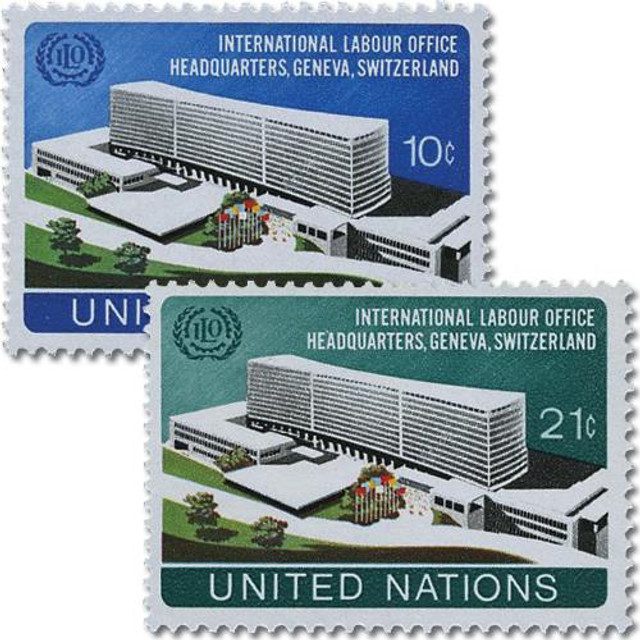On April 11, 1919, the International Labour Organization was created.
By the early 1900s, there were a number of professional groups around the world dedicated workers’ rights. These included the International Association for Labor Legislation.
During World War I, there was demand for a comprehensive international program to protect the working class, largely in consideration of those working toward the war effort. For many, attention soon turned to post-war reconstruction and the protection of labor unions. Labor groups in Europe wanted to create an international labor rights body, in part, to end secret diplomacy.
After fighting ended, the Allied powers met at the Paris Peace Conference in January 1919. Among the issues they discussed was the protection of labor unions and workers’ rights. They all agreed that an international body was needed to guide future labor relations. As a result, the Commission on International Labour Legislation was created to draft proposals for a new organization. After meeting on February 1, they came up with two proposals.

The British called for an international parliament that would create and enforce labor laws. Samuel Gompers of the American Federation of Labor (AFL) opposed this idea, believing it could infringe on the protections already in place in America. He suggested a labor body that would make recommendations, leaving enforcement to the League of Nations. Though the British strongly opposed it, Gompers’ proposal was ultimately accepted.
The finalized charter declared workers could not be treated as commodities, workers had the right to a wage large enough to live on, that women should receive equal pay, set the eight-hour work day or 40-hour work week, one or more days of rest, equality for foreign workers, and regular factory quality inspections. The Peace Conference accepted the charter and adopted it, creating the International Labour Organization (I.L.O.) on April 11.
Over the years, the I.L.O. grew larger and continued to make a difference in the quality of working conditions. Here are some of the highlights from the 1940s to the present:
In 1948 the International Labour Conference (I.L.C.) created Convention No. 87, which granted workers the freedom of association and the right to organize. From 1948 to 1970, the I.L.O.’s membership doubled. In this time, the budget increased to five-times greater than when the organization began, and the number of officials quadrupled. In 1969 the I.L.O. won the Nobel Peace Prize.
From the 1970s to the present, the I.L.O. continued to set and maintain standards in the employment industry. It played an essential part in the emancipation of Poland from dictatorship and gave its full support to the Solidarność Union (Polish for “Solidarity”). The I.L.O. has consistently worked to prevent unemployment and regulate the number of hours an employee can work. It has provided protection for the sick, children, women, seniors, and workers employed in countries other than their own. A current goal of the I.L.O. is to cut world poverty in half.
Since its formation, the I.L.O. has taken great strides in protecting the workers of the world. This organization has been a large part of the United Nations and its goal of achieving worldwide peace.
Discover what else happened on This Day in History.





Good information.
Great id3eas. Unfortunately, there is still a gap in gender pay and other abuses in USA and elsewhere.
The labor movement became a social force in the U.S. in the 1880s and 90s, and an official Labor Day was established in 1894, and is today celebrated in North America on the 1st Monday in September, a day that also celebrates the unofficial end of Ssumer. Over 60 other countries celebrate International Labour Day on May1. But the details of the ILO were new to me. So many of these social organizations are working without much notice to the general public, and I thank you for educating us.
I too had not heard of the ILO. Much work still needs to be done to get pay equality, a living basic wage and better working conditions.
Equal Pay for Equal Work! That’s the mantra we often hear today. However, like most things in life, it’s a little more complicated than that. What amuses me is that I repeatedly hear that “Congress should pass a law mandating equal pay for equal work; but I never hear anyone correct that statement by saying that “actually, Congress DID pass a law “mandating equal pay for equal work”. It’s known as the “Equal Pay Act of 1963” (Look it up.) That’s more than 50 years that this law has been on the books. This law makes it illegal for any employer to pay men and women different wages for “work substantially equal in terms of qualifications required – education, training, experience, etc.” The law allows for differences in pay between (any) individuals based on a seniority system, a merit system, or production-based pay (piece rates). Interesting that although this Federal Labor law has been on the books for 50+ years (and has been repeatedly litigated, thousands of times, a “gap” still exists in AVERAGE wages between men and women. Could this be because of other factors? – such as, not every job commands the same pay rate (due to supply and demand, skills required, working conditions, etc. etc.). In my experience as a Human Resources Director for over 40 years, I found that when men and women occupy the SAME job, with the same qualifications, seniority, etc.; they ARE paid the same. More women need to become engineers and scientists, skilled craftsmen, etc. and more men need to become public school teachers, etc. – then you’ll begin to see the “wage gap” (AVERAGE wages of men and women) narrow.
https://www.washingtonexaminer.com/harvard-prof.-takes-down-gender-wage-gap-myth/article/2580405
I hesitate to comment on this as so many loose their jobs when making statements about labor these days.
The labor movement has decayed over the years and these long fought for protections are just a fantasy these days. The only real protection a worker has anymore is “If You Don’t Like It, There’s The Doorâ€.
The 8 hour work day/40 hour work week is almost a thing of the past. I find myself working 18-20 hours a day and told to stay home when I hit 39 so no overtime pay and expected to work every weekend and holiday on top of it, although I do get overtime on the 3 holidays that my company observes if I am called to work.
Didn’t know about this organization; always good to learn something new.